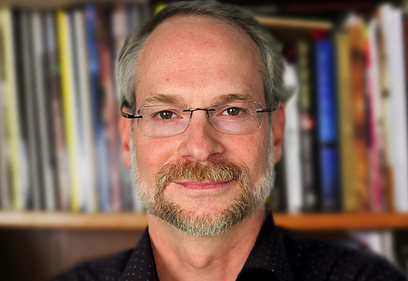Interview with a Hubspot VAR - James Heaton of the Tronvig Group, NYC
Nick Sal: Who are you, whats your role, where do you work?

James Heaton: James Heaton, President and Creative Director of Tronvig Group, a full service values driven marketing agency in Brooklyn, New York. Values driven means that we help our clients do better at doing good.
Nick: What are the pros and cons of your position in the organization?
James: I run it so the pros are watching employees grow and flourish—achieve their personal mastery—as they give their mental energy to the collective effort.
Cons: Taking responsibility for any failure of any member in the organization, and firing people.

Nick: What is branding? How is it different than marketing?
James: Branding is not just putting a logo on things, it is the mental/emotional impression left by your products or services in the minds of those who encounter them.
To quote my own blog post The Difference Between Marketing and Branding: The brand is ultimately what determines if you will become a loyal customer or not. Marketing may convince you to buy a particular Toyota, and maybe it’s the first foreign car you ever owned, but it is the brand that determines if you will buy only Toyotas for the rest of your life. Marketing can unearth or activate buyers; Branding is what makes loyal customers, advocates, even evangelists out of those who buy. This works the same way for all types of businesses and organizations.
Every single person in an organization is, with their every action, either constructing or deconstructing the brand. Every thought, every action, every policy, every ad, every marketing promotion has the effect of either inspiring or deterring brand loyalty in whoever is exposed to it. All of this affects sales.
Nick: Thanks for that quality response, James. How could your fellow marketers take advantage of a greater focus on branding in their own campaigns?
James: Branding, as we understand it, is actually the foundation on which great marketing campaigns are built. Marketers who ignore this, risk ineffectiveness.
If a brand is weak the marketing has to compensate for this insufficiency, and this can severely curtail the marketing campaign's power and persuasiveness. Marketing answers your immediate need to sell or promote. It's essential, but it is branding that makes your customers give a sh%t. Marketing on its own cannot do this. If the brand is strong, marketing becomes 100 times easier. Marketing without the benefit of a well articulated brand is like swimming upstream. It can be done, but it's a lot of work.
Let's look at a classic example of this in action. Why can't Dell sell an Mp3 player, but Apple can sell millions?
The shortest answer to this is that Dell's brand was never made to answer the question of why it exists beyond its role as a manufacturer of computers. By answering larger questions and fulfilling a broader set of needs, Apple has built a lifestyle brand. As such it can sell many kinds of things, not just computers. This power is not derived solely or even primarily from the fact that Apple makes good computers. The Apple brand has defined a lifestyle. If I agree with that life style—or want to live it—Apple is already there in my mind. This kind of brand power adds rocket fuel to both marketing and sales.
Nick: Wow, James is dropping some S-bombs over here! I admire your passion sir. Now, let's get down to brass tacks: What do you believe is the future of your industry?
All marketers must learn how to give, how to be curators of meaning and sources of value for their customers. They must learn how to help clients not only do better, but actually BE better.
Nick: Okay, how about the future of your niche in the marketing industry?
Values driven marketing. Marketing that includes in it's DNA the notion that the world should be made better by what we and our clients do.
Nick: Thanks for sharing your vision of the future. Do you have any examples of past marketing/branding wins to share?
James: We are proud of the re-brand of the New-York Historical Society. And we are proud of the "Free" campaign we did recently for the Bronx Museum.
Nick: Looks pretty good, James. I like the CTA button on the case study page as well. But when you really get down to it, why was this campaign successful?
James: In the case of the New-York Historical Society it was the result of thorough research, and a lot of hard work at the outset of the project. For the Bronx Museum, it's a good example of an important trend in advertising: brands do best when they give real value and they work to go out and engage on a personal level with the target constituency.
Nick: Do you have any good books, websites that you read to stay up to date/learn more about your "craft" in general?
James: Newest is not always best. Everyone in my position (running a company) should read Ricardo Semler's Maverick and Peter Senge's The Fifth Discipline.
Nick: You've been great, James, thanks for doing a little Q& A with me. What other articles would you like me to write about on this blog? What types of people would you like to hear from on future Posts?
James: Purely selfish of me, but I'd like to hear how others are trying to stretch the limits of what's possible in this industry.
Nick: Very good, James. We will do our best. Thanks again for doing this quest interview and best of luck to you and your firm's inbound marketing efforts!



